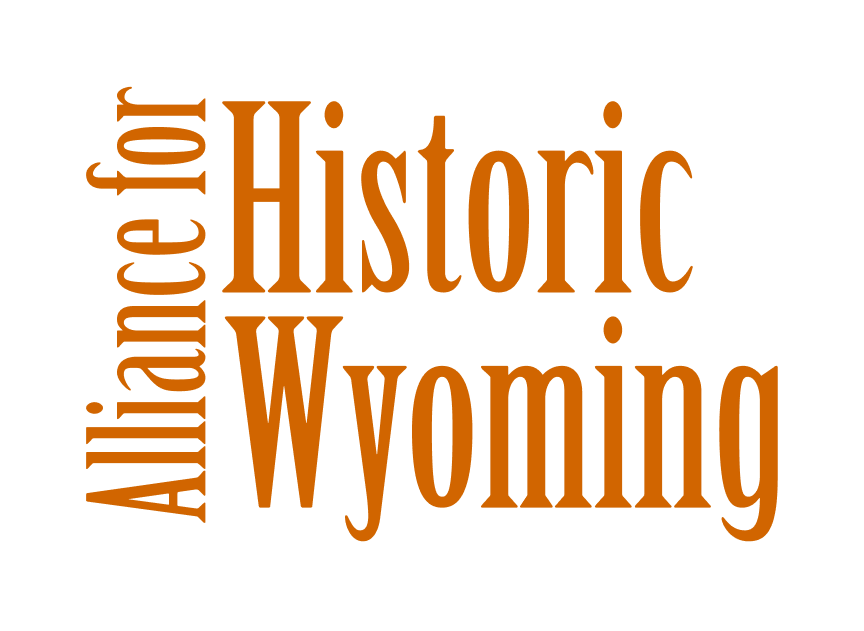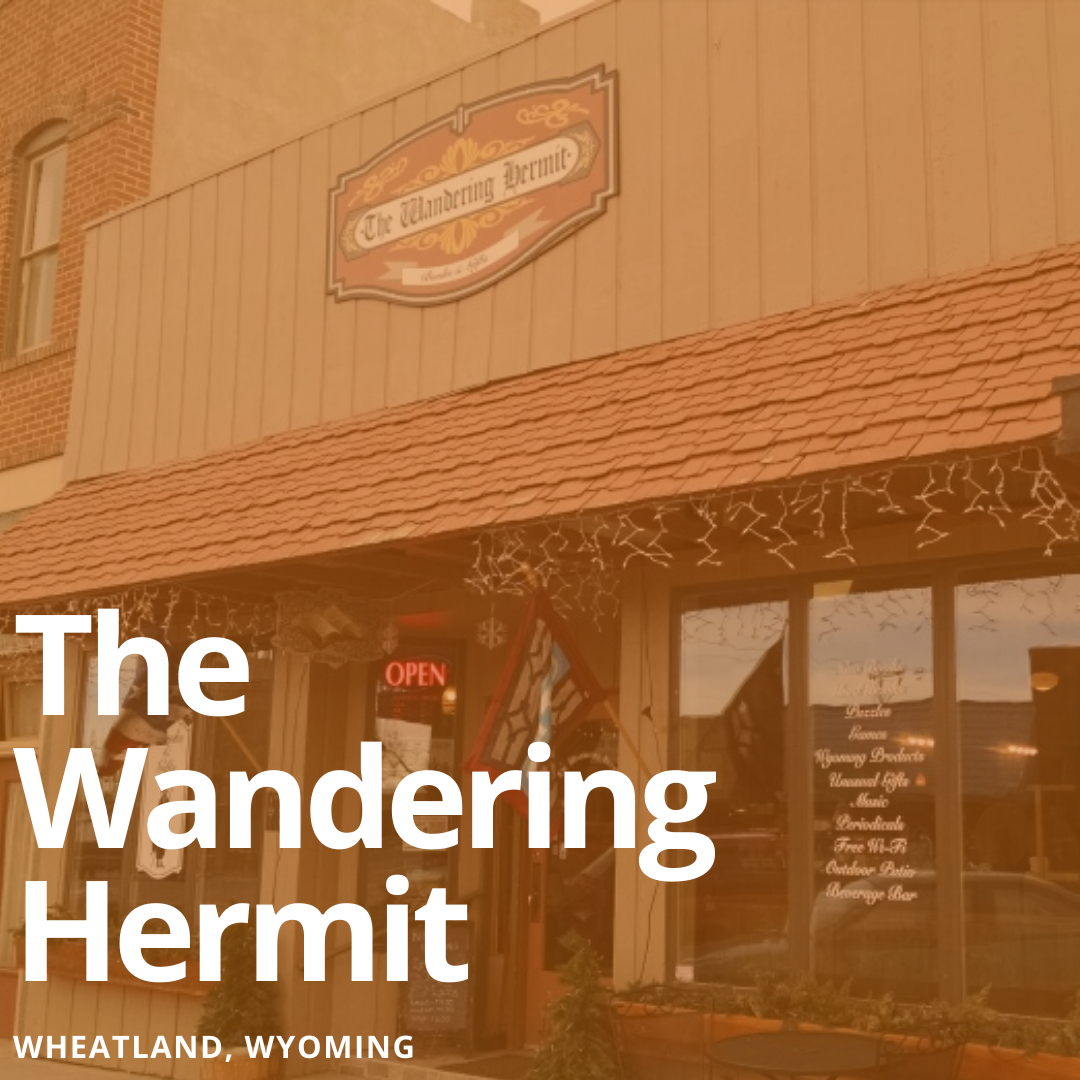By Rine Kasckow, Preservation Programs Assistant
May 8, 2018
This is part II of the profile, to read part I click here.
Officer Quarters
 A view of the south elevations of the barracks
A view of the south elevations of the barracks
The layout of the officer’s quarters all face the barracks so that each regiment was connected to a certain leader. This layout also allowed easy access to the bases basic amenities that were conveniently located centrally to all base amenities including the parade field. F.E. Warren has been host to three influential African American Officers who broke boundaries within military history. There was Charles Young, Benjamin O. Davis, and George Prioleau who occupied officer quarters on base, Benjamin O. Davis Sr. also had his son along Benjamin O. Davis Jr. who would make a name for himself in later years. These officers were given their own houses, as a place for their families and themselves to call home while they were on duty.
An African American Officer in the late 19th century was rare to non-existent due to the exclusion of African Americans at the United States Military Academy at West Point. This would change between 1870-1889 when 12 African American applicants were accepted into the academy. Though graduating would not be an easy feat, only three cadets would make it to graduation due to fellow cadets ostracising and hazing them because of the color of their skin.
http://www.arlingtoncemetery.net/cdyoung.htm
Charles Young was one of the first three African Americans who graduated West Point, starting his career in 1889. He would later become the first African American to reach the rank of US Army colonel. On his military journey, he would encounter “isolation and hostility from other units on base,” [1] for example his time at Fort Robinson in Nebraska. He would later move on to Ft. Duchesne, become a military professor at Wilberforce, and then in 1910, he would arrive at F.E. Russell. He would stay on base till 1912, where he would then leave for Liberia taking three young men “to organize and equip the Liberian army.” [2]
Cpt. Prioleau was a chaplain in the 9th Cavalry of the Buffalo soldiers, and a leader against inequality and mistreatment of Black soldiers in the army. He did this “through public letters and editorials, Prioleau challenged racial segregation and attacked the hypocrisy of fighting a war for liberation in Cuba while the United States remained locked in a mindset of racism.” [3] He would arrive at F.E. Warren in 1909, where he would conduct his first service in Cheyenne at the African Methodist Episcopal Church. He would be transferred to Hawaii and the 25th infantry in 1916.
General Benjamin O Davis Sr. https://www.army.mil/africanamericans/profiles/davis.html
Benjamin O. Davis Sr. was the first African American to reach the position of General in the U.S. Army and would later command a regiment of the Tuskegee Airmen in World War II. He arrived in Wyoming in the early 1900s along with his family, which included his son Benjamin O. Davis Jr. who would later become the first African American to become a three-star general in the air force. His son would also be one of the architects of Executive Order 9981, which established “the President’s Committee on Equality of Treatment and Opportunity in the Armed Services, committing the government to integrating the segregated military.” [4] The Davis family would arrive in Wyoming in 1902 being assigned to Ft. Washakie, leaving for other assignments but would come back in 1912 to F.E. Warren.
The houses of these three officers are at the moment are trying to be located, they are close to identifying the buildings that Cpt. George Prioleau, Colonel Charles Young, General Benjamin O. Davis Sr., and Lieutenant General Benjamin O. Davis Jr. occupied in the early 20th century. The historic structures have been preserved into the present day, preserving the memories and experiences that these four men who accomplished such achievements in their life.
9th Cavalry Band

9th Cavalry Band, Fort D.A. Russell 1911- 1912. Cpt. Hamilton, Band Leader. Wyoming State Archives
A special part of the Buffalo soldier history on F.E. Warren was the 9th Cavalry band, they held a high musical standing on the base, in Cheyenne, and around the state. They were widely received at state fairs, Cheyenne Frontier Days, and had a close relationship with the African Methodist Episcopal Church. They performed many a concert for church members, one of which was reviewed by the Cheyenne Daily leader which commented saying how accomplished the band was. An important member of the band in the early 1900s was Wade H. Hammond was born in the state of Alabama around 1879 and became one of the first African American bandmasters of the United States Army. He was appointed from Western University in Quindaro, KS around 1909 where he had been a bandmaster for two years. Hammond’s military career spanned the duration of some of the most important wars such as Spanish American War, WWI, and the early years of WWII. He was asked to work with the band at Tuskegee Institute, and he was also selected to conduct a special massed military musical group in the Philippines. When he was at Fort DA Russell in 1910 he played many concerts in town. His success would later grant him permission to attend a course at Royal Music School for Bandmasters in London for two months. The 9th Cavalry band was not only important to the military but the community that was expanding in Cheyenne.
F.E. Warren Cemetery
General John D. Stevenson in 1867 established the F.E. Warren cemetery with 40 acres of land. There were plans to separate each plot by position such as “Section A would contain officers, Section B and C were to be reserved for enlisted, and Section D for civilians and dependents.” [5] Though this separation was not brought to reality.
But how does the cemetery tie in with Buffalo Soldier History? The founder of the Wyoming Buffalo Soldiers Association, Cornelius Doc Settles, answers this, “F.E. Warren’s cemetery may actually be one of the few remaining early fort era military treasures. It can also be a bit hard to find and yet there it stands, hidden behind chain link fencing, a testament to early military history that includes some of its former inhabitants. Of course, thru time the cemetery has become recognized as an eternal place of honor for a group of African American warriors better known as the ‘Buffalo Soldiers.’” There are currently twenty-seven people interned at F.E. Warren Cemetery who were either part of the 9th cavalry during the early twentieth century or associated with the 9th cavalry such as civilians. The first Buffalo Soldier that was laid to rest in Cheyenne on base was Private Charles Hanley 9th Cavalry Trooper in 1888. And if you remember reading about Charles W. Jefferson from the first profile on the Buffalo Soldiers on F.E. (found here), he’s one of the twenty-seven that is buried on base. There are so many stories of the soldiers of the 9th cavalry that are buried and preserved within the fences of the F.E Warren Cemetery, making this space important to the Cavalries history.
There have been various rehabilitation projects on F.E. Warren base, such as the restoration of Building 284, the historic Gym, and base housing in 2013. During the project, historic murals were discovered that are “believed to be painted by European Prisoners of War detained at the base.” [6] This protection of this discovery was worked on by Travis Beckwith, 90th Civil Engineer Squadron cultural resources manager and the State Historic Preservation Office. With this new rehabilitation of the Building 284, it allowed for a new space to be open for base personnel and now is occupied by Air Force Global Strike Command’s Missile Engineering Office. This is only one of the many rehabilitation projects that have happened on base allowing for a continuation of the base to remain its historical appearance and the continuation of the history that happened on the base such as the Buffalo soldiers. These preservation projects allow for people to walk through the same streets and buildings that existed in the days of the Buffalo soldiers.
The buildings are not only the momentum of the Buffalo Soldiers time in Cheyenne, Wyoming. Just outside the base on Randall Avenue stands tall a statue dedicated to the brave men who fought in the Buffalo Soldier regiments. The presence of this statue is due to the hard work and dedication of The Wyoming Buffalo Soldier Association, who have created a figure that will allow Cheyenne’s communities to look back and remember the lives, the hardships, and the triumphs of the Buffalo soldiers who occupied F.E. Warren in the late 1800s and early 1900s.
I’d like to personally thank Cornelius A. Doc Settles the founder of the Wyoming Buffalo Soldiers association for aiding me in my research of the Buffalo Soldiers at F.E. Warren and the continued support for the Alliance for Historic Wyoming’s Diversity Initiative.
References:
[1] https://www.nps.gov/chyo/learn/historyculture/colonel-charles-young.htm
[2] Frank N. Schubert and Irene Schubert, On the Trail of the Buffalo Soldier II: New and Revised Biographies of African Americans in the U.S. Army, 1866-1917, Volume (Scarecrow Press, 2004).
[3] http://www.blackpast.org/aaw/chaplain-george-prioleau-1856-1927
[4] https://www.ourdocuments.gov/doc.php?flash=false&doc=84
[5] http://www.warren.af.mil/News/Article/331657/warrens-cemetery-deep-with-history/
[6] http://wyoshpo.state.wy.us/Press/Release.aspx?ID=1510
LIKE WHAT YOU JUST READ?
- Browse our archive of Historic Places and Spaces Profiles by clicking here.
- To learn about all of our campaigns and initiatives, click here.
- Subscribe to our newsletter to learn more about what’s going on in Wyoming.
- Donate or become a member to help us produce stories, organize events, and be a voice for preservation across the state.
- Like us on Facebook, and follow us on Twitter and Instagram to see our latest updates!




1 Comment
byDoc Settles
Outstanding…was a sure pleasure supporting Rine and the Alliance for Historic Wyoming.. Maybe the history of ‘ol 54th Massachusetts Flag bearer Color Sergeant Ish Palmer buried in Cheyenne Lakeview cemetery will reveal even more.. Wyoming early frontier is worth preserving.. Doc Settles
Comments are closed.